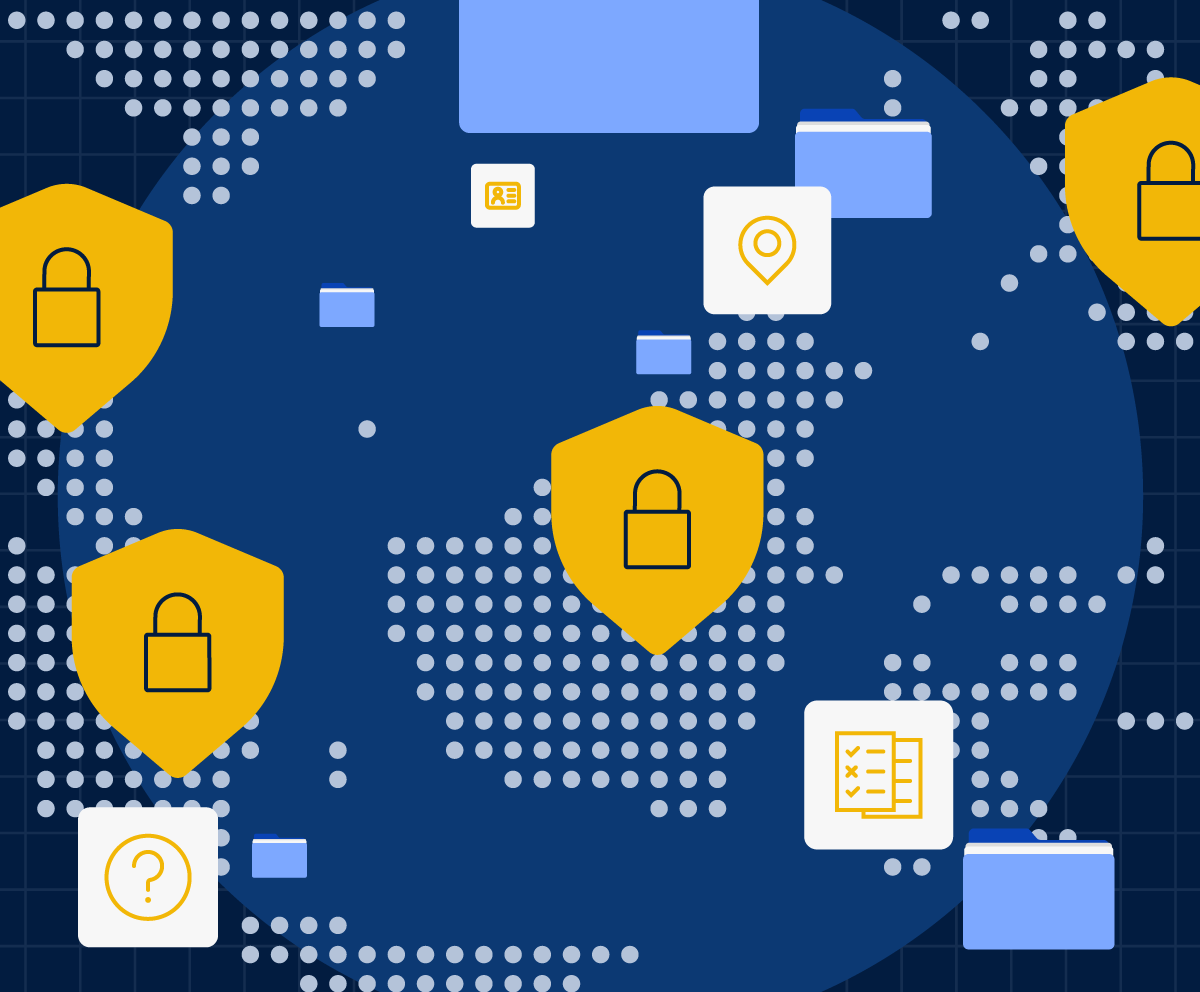Have you ever filled out the same information on multiple websites in a row? It's a frustrating experience, but it's just one example of how data silos create friction in our digital lives.
Data silos are isolated pockets of information within organizations or across different platforms. Imagine a company with separate databases for customer purchases, website visits, and email marketing. Each department might have valuable data, but they can't easily access or combine it, hindering a holistic view of the customer. This lack of data integration creates a fragmented experience for consumers and stops businesses from reaching their full potential.
This blog will explore the problem of data silos: what they are, why they're harmful, and how Bounty Media offers a solution. We'll delve into how Bounty's innovative approach breaks down these barriers, creating a more connected and efficient data ecosystem that benefits both consumers and businesses.
The Problem: Data Silos Explained
Data silos are like locked filing cabinets scattered throughout a vast building. Each cabinet holds valuable information, but accessing the complete picture requires navigating a confusing maze of departments and systems. This fragmentation of data, often unintended, creates significant challenges for organizations.
Impact on Data Governance:
Data silos make data governance, the set of policies and practices for managing data, extremely challenging. Here's how:
- Inconsistent Data Quality: Data stored in silos can be inconsistent, outdated, or even inaccurate due to a lack of centralized oversight and data cleaning processes.
- Limited Visibility: Without a unified view of all data, it's difficult to identify trends, make informed decisions, or measure the effectiveness of marketing campaigns or other initiatives.
- Compliance Risks: Data privacy regulations like GDPR and CCPA require organizations to have control over all their data. Silos make it hard to track and manage data, increasing the risk of compliance violations.
Here are some real-world examples of data silos:
- Retail: A customer might have a loyalty card for a clothing store, but their purchase history on the online platform remains disconnected. This makes it difficult for the retailer to offer personalized promotions.
- Finance: A bank might hold a customer's account information, but its investment portfolio with a separate wealth management firm remains siloed. This limits the ability to provide comprehensive financial advice.
- Healthcare: A patient's medical records from different hospitals might not be readily shared, leading to delays in diagnosis and treatment.
The consequences of data silos are far-reaching.
For consumers, data silos mean:
- Frustration: Repetitive data entry across different platforms.
- Lack of Personalization: Generic marketing messages instead of relevant offers based on past behavior.
- Privacy Concerns: Unclear information about how data is used across various platforms.
Businesses, too, suffer from data silos:
- Wasted Resources: Difficulty in obtaining a complete view of the customer journey, leading to inefficient marketing campaigns.
- Limited Customer Insights: Inability to leverage all available data for accurate customer segmentation and targeting.
- Poor Decision Making: Fragmented data hinders informed business decisions based on a unified customer understanding.
How to Break Down Silos
Bounty media offers a revolutionary approach to data collection and management that dismantles data silos. We champion the concept of zero-party data, which is information users explicitly consent to share. Unlike traditional methods that rely on third-party cookies or scraping data, Bounty Media empowers users to control their data destiny.
Here's how Bounty media facilitates data exchange while safeguarding user privacy:
- Privacy-Focused Infrastructure: Bounty Media uses a secure, permission-based architecture. Users control their data through a central dashboard, granting access to specific data points (demographics, interests, purchase history) to chosen publishers and advertisers.
- Standardized Data Exchange: Bounty Media utilizes standardized data formats to ensure seamless sharing across different platforms. This eliminates the need for complex data integration processes on the publisher and advertiser side.
- Consent Management Platform (CMP): Bounty Media integrates a CMP that provides granular control over user consent. Users can choose to share specific data points with different partners and revoke consent at any time.
For consumers, Bounty empowers them to:
- Take Control of Their Data: Decide what information they share and with whom.
- Enjoy a Seamless Experience: No more repetitive data entry across different platforms.
- Receive Personalized Offers: Get relevant content and promotions based on their interests and preferences.
Benefits for Businesses
By breaking down data silos, Bounty offers significant advantages for businesses:
- Unified Customer View: Access to a wider range of consented consumer data, creating a 360-degree view of the customer.
- Enhanced Targeting: More accurate customer segmentation leads to targeted marketing campaigns with higher ROI.
- Deeper Customer Insights: Uncover valuable insights into customer behavior and preferences, informing product development and marketing strategies.
- Improved Customer Experience: Customized content and offers lead to increased customer satisfaction and loyalty.
Benefits Beyond User Control and Convenience
While user empowerment and a seamless experience are clear benefits, Bounty's solution unlocks additional advantages:
- Data Quality and Accuracy: Users directly manage their data, ensuring its accuracy and minimizing inconsistencies that plague traditional data collection methods.
- Reduced Fraud: Bounty's consent-based approach helps mitigate fraudulent activity by verifying user identities and data ownership.
- Enhanced Data Security: Bounty prioritizes data security with robust encryption and access controls, minimizing the risk of data breaches.
By breaking down data silos with a focus on user consent and privacy, Bounty Media paves the way for a more collaborative and secure data ecosystem that unlocks new possibilities for both consumers and businesses.
A Connected Future: Breaking Down Silos Together
Data silos are a major barrier in the digital age. They create a fragmented experience for consumers and hinder businesses from reaching their full potential. Bounty Media offers a revolutionary solution by promoting user-controlled, zero-party data. This approach empowers consumers, fosters trust, and provides businesses with the insights they need to succeed.
By breaking down data silos, Bounty Media is paving the way for a more connected and efficient data ecosystem. This benefits everyone involved, creating a win-win situation for both consumers and businesses.
Ready to learn more? Visit Bounty Media to discover how their innovative platform can help your business overcome data silos and unlock the power of a unified customer view.
Our latest news and blog articles
Lorem ipsum dolor sit amet, consectetur adipiscing elit. Sed do eiusmod tempor incididunt ut
State of PDPAs in SEA and Impact on Data Collection
The digital age has helped transform Southeast Asia (SEA) into a vibrant economic hub. This growth is driven by a growing internet user base and a ...
Trust and Transparency: How It Can Boost Your Success
Imagine scrolling through a social media feed and being bombarded with targeted ads. They boast supreme features and benefits, but the source feels ...
Data Silos: The Hidden Barriers to a Seamless Digital Experience
Have you ever filled out the same information on multiple websites in a row? It's a frustrating experience, but it's just one example of how data ...




